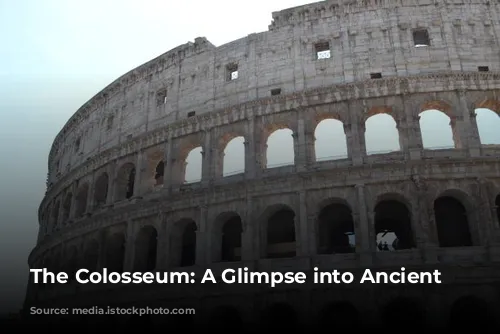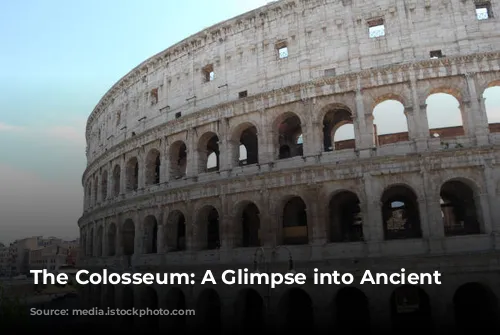The Colosseum, also known as the Flavian Amphitheatre, stands as a majestic testament to the grandeur of the Roman Empire. This iconic structure, the largest and most impressive amphitheatre in the Roman world, was commissioned by Emperor Vespasian of the Flavian dynasty and inaugurated by his son, Titus, in 80 AD.
A Spectacle of Grand Proportions
The opening ceremony of the Colosseum was a lavish affair, lasting an astounding one hundred days. The crowds were treated to an extravaganza of gladiatorial combats, animal hunts, and naumachias – spectacular naval battles staged in the arena, filled with water for the occasion. The historian Suetonius records that a staggering five thousand animals were slaughtered during these festivities.
The Origins of the Colosseum’s Name
But why is this magnificent monument called the Colosseum? The name first appeared in a prophecy by the Venerable Bede, a medieval monk, who declared, “Rome will exist as long as the Colosseum does; when the Colosseum falls so will Rome; when Rome falls so will the world.” The name may have been derived from the massive statue of Emperor Nero, known as the “Colossus,” which stood 35 meters tall near the amphitheatre. Sadly, the Colossus has since been destroyed, leaving only its legacy in the name of the Colosseum.
A Masterpiece of Roman Engineering
The Colosseum stands as a remarkable example of Roman architectural ingenuity. Constructed with a combination of concrete and travertine stone, its elliptical shape allowed for the seating of a vast audience. The amphitheatre featured four levels, the first three boasting eighty arches each, adorned with magnificent statues.
The Romans were masters of the arch, a structural element that enabled them to distribute the weight of their grand buildings effectively. This principle is evident in Roman aqueducts, and the Colosseum can be seen as a series of interconnected aqueducts. It is remarkable to consider that this monumental structure was erected in less than a decade!
The Colosseum: A Story of Transformation
Today, we see only the skeleton of what was once the most magnificent arena in the ancient world. The outer brick wall, which once encircled the Colosseum, now stands incomplete, with three-fifths of its structure missing. In the Middle Ages, the Colosseum’s materials, including marble, lead, and iron, were salvaged for other projects. The Barberini Palace, Piazza Venezia, and even St. Peter’s Basilica were built with stones taken from the Colosseum. The holes still visible on some of the columns are evidence of this plundering, as the Romans used lead and iron for nails embedded in the marble blocks.
Seating Arrangements and Ingenious Design
The Colosseum could accommodate a massive seventy thousand spectators. The seating was meticulously arranged in tiers, angled to ensure every individual had a clear view of the arena. Entry was free for all Roman citizens, but seating was based on social status, much like modern theatres. The upper tiers were reserved for the common people, with separate sections for men and women. As one moved closer to the arena, the social status of the spectators increased, with senators, vestals, priests, and the emperor holding the most prestigious seats.
Like modern sports stadiums, the Colosseum featured a sophisticated roof system known as the Velarium. This elaborate structure was made of linen tarpaulin, suspended by ropes, winches, and wooden poles that encircled the upper wall. One hundred sailors from the Imperial fleet were responsible for manipulating the Velarium, moving it in perfect synchrony to the beat of a drum, providing shade for the spectators.
The Arena: A Stage for Spectacle
The arena, once covered in a mixture of brick and wood, has vanished over time, leaving only the cellars that housed the equipment used to prepare and execute the games. These cellars contained lifts and hoists, complete with counterweights, which were used to bring animals and gladiators into the arena through trapdoors, creating dramatic and unexpected appearances. The same mechanisms were employed to raise set-designed backdrops for the hunting events.
Entertainment for the Masses
The events held in the Colosseum were both symbolic and practical, forging a connection between the citizens and their leader through shared participation in public spectacles. These events, while serving as entertainment, also served to distract the populace from political issues.
A Variety of Shows
The Colosseum hosted a wide range of events, each with its own designated time slot. In the morning, the Venationes took place, featuring fights between exotic animals or between men and animals. The “Silvae” were especially impressive, re-creating forest scenes with trees, bushes, and animals. The public was also treated to less violent events, such as the famous display of an elephant trained to write words in the sand with its trunk.
The Glory of the Gladiators
The most popular event was undoubtedly the gladiatorial combats. After a break in the morning’s events, the arena floor was cleared of bodies and sprinkled with fresh sand. The deafening roar of the crowd, accompanied by the blaring of trumpets and the pounding of drums, signalled the triumphant entry of the gladiators.
These brave warriors emerged from an underground passageway connected to the Gladiators’ barracks, the Ludus Magnus, and were welcomed by their fans like heroes, similar to the adoration enjoyed by modern sports stars. After a ceremonial walk around the arena, the gladiators paid homage to the Emperor by saluting with the famous words, “Ave Caesar, morituri te salutant” (Hail Caesar, those who are about to die salute you).
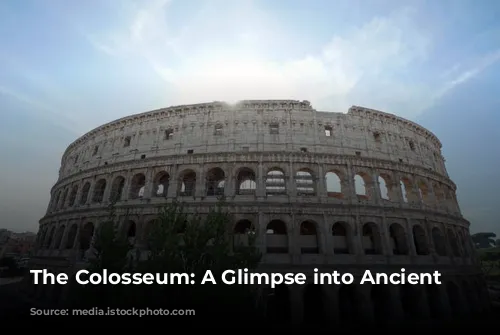
The Life of a Gladiator
The term “gladiator” derives from “gladius,” the short sword used by Roman legionaries. While some gladiators were prisoners of war, many were free individuals who chose to fight in the arena for a limited period of time in hopes of achieving freedom and wealth. Others were simply poor individuals seeking fame and fortune.
The profession of a gladiator provided excellent pay and immense popularity, particularly among women who would often spend considerable sums of money for a night with a renowned gladiator.
There were twelve types of gladiators, each equipped with unique weapons and armor. The Retiarius, armed with a net, trident, and a knife, faced off against gladiators armed with shields and sickles. Others wore crested helmets, heavy armor, and carried javelins. The choice of gladiators for each duel was carefully made to create dramatic confrontations.
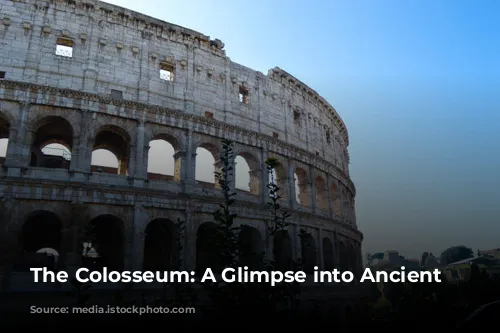
The Fate of the Fallen
A defeated gladiator could plead for mercy by raising an arm, appealing to the audience and the emperor for their lives. The crowd would then shout their desires to the emperor, who held the power to decide the gladiator’s fate. A raised thumb meant life, while a downward thumb signaled death.
Victorious gladiators were rewarded with golden palm leaves and substantial sums of money. After each battle, servants dressed as Charon, the Ferryman of the Underworld, ensured that the wounded were dead, sometimes finishing them off. The blood of the gladiators was highly sought after, as people believed it possessed healing properties, offering relief from epilepsy and enhancing sexual vigor.
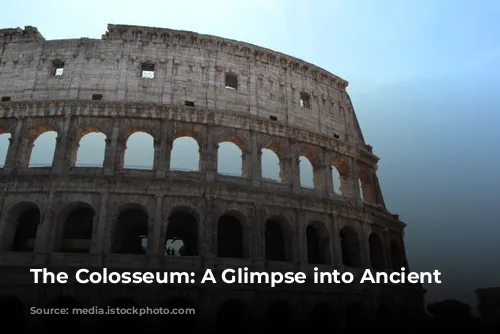
Cruelty and Spectacle
The Roman spectators reveled in brutal spectacles, which we might consider shockingly violent. Their passion for these events can be compared to the modern fascination with “splatter” cinema, although the reality of the Roman arena was far more brutal. The stench of blood, burnt flesh, and wild animals during the hunts was overwhelming, despite attempts to mask it with incense and perfumes.
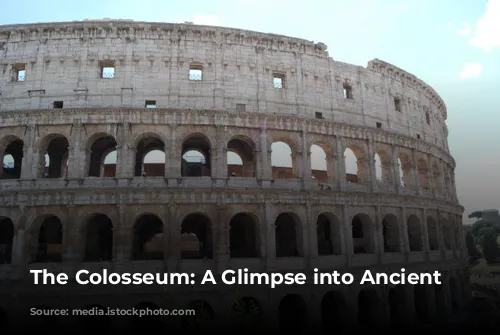
The Colosseum: A Legacy of Time
With the decline of the Roman Empire in the 6th century, the Colosseum fell into disuse, its walls serving as shelter for confraternities, hospitals, hermits, and even a cemetery. In the Middle Ages, the Colosseum became a major source of building materials, plundered to construct other structures in Rome.
Despite the threat of demolition by Pope Sixtus V, the Colosseum was declared a sacred monument dedicated to the Passion of Christ by Pope Benedict XIV. A cross was placed atop a pedestal, symbolizing the suffering of Christian martyrs. This cross remains the starting point for the Stations of the Cross on Good Friday.
The Colosseum has since become a revered site for Christians and has been protected from further destruction. Successive popes have restored and consolidated the structure.
For modern-day tourists, the Colosseum stands as a powerful reminder of ancient Rome, as Charles Dickens wrote, “seeing the ghost of old Rome floating over the places its people walk in.” The Colosseum is a testament to the power, ingenuity, and cruelty of the Roman Empire, offering a fascinating glimpse into a lost world.
